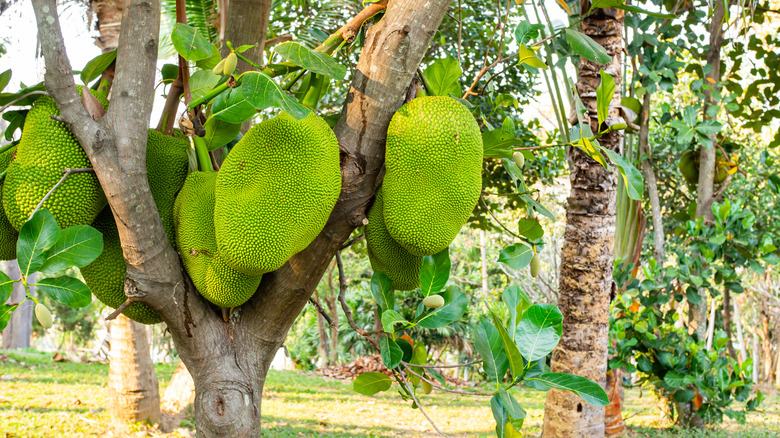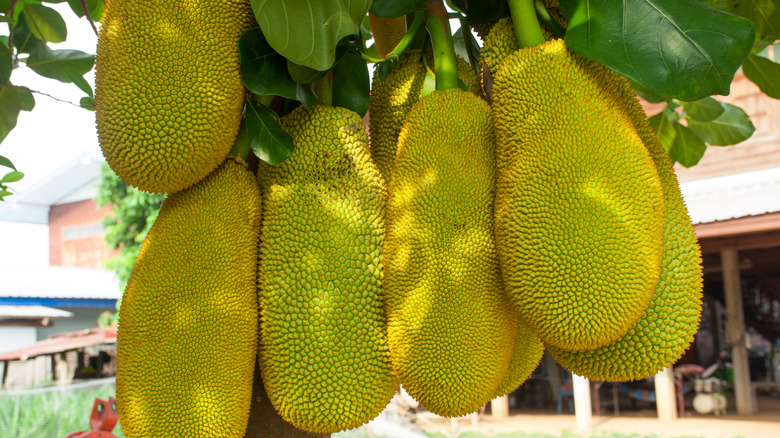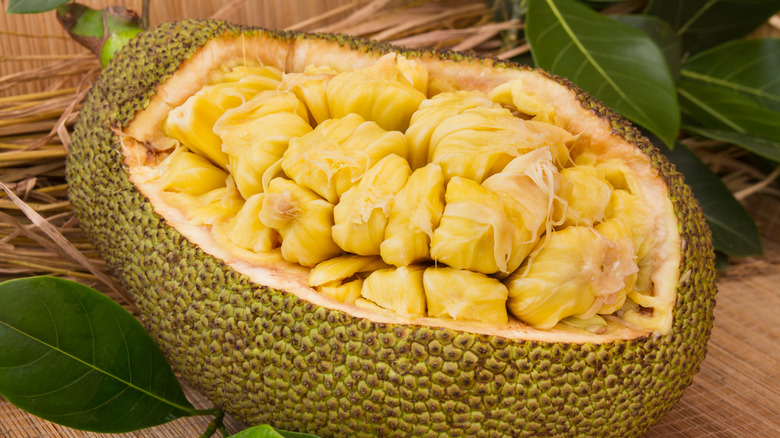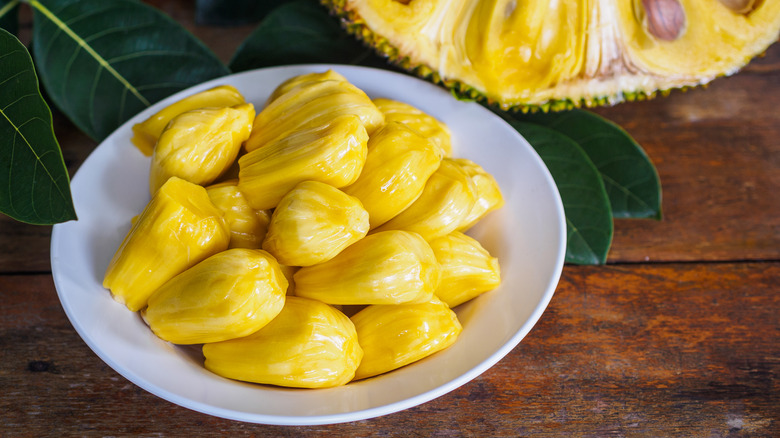3 Ways You Can Tell Your Jackfruit Is Ripe And Ready To Eat
While jackfruit might be a new and trendy food to some, the produce native to south and southeastern Asia has been around for a long time, according to Jack and Friends Jerky. Now that the plant has become an incredibly popular option for vegan and vegetarian products, it is also grown in the United States and Mexico. Though there are plenty of jackfruit products out there, those who have found recipes that call for fresh jackfruit, or even those who want to experiment with their own recipes, might need to pickup their own whole one at the grocery store.
Jackfruit can be used in tons of different ways. From stewed and roasted to put into salads and used to create homemade vegetarian protein options, there are likely many scenarios you would like to try with the produce. But unless you're buying a pre-made product consisting of jackfruit, you might not know how to tell if the whole plant is ready to eat. With a few guidelines, however, you'll find it is like shopping for any other type of produce.
Look at the color of the jackfruit
Though the large fruits are often depicted as being green and somewhat spiked with a studded skin, that's actually not what jackfruit looks like when it is ripe. In fact, if you try to cut into jackfruit that is green and not yet ripe enough to be cooked with, you might find it quite difficult to get your knife through the skin. Similar to cutting into a tough-skinned squash that isn't ready to be cooked, you definitely don't want to try opening up an unripe jackfruit.
According to In the Kitchen With Matt, jackfruit turns fully yellow when it is ripe and ready to be eaten. The more yellow it is, the riper it is. Sometimes you might see tinges of green left on a somewhat yellow jackfruit. Think of those as mostly ripe bananas with a hint of green still. They're ripe, but not as ripe as they could be in their prime. As with bananas, jackfruit is still good when it turns slightly brown.
But the color isn't the only indicator of jackfruit that's ripe. You can also test the way it feels and smells like other kinds of produce.
Check the firmness of jackfruit
If the jackfruit looks slightly yellow but still has something of a greenish hue, you might need to check a couple of other indicators to see if it is ripe. When you gently press on jackfruit with your fingertips, it should be soft enough to press into but not mushy if it is ripe, according to Wiggly Wisdom. So jackfruit that is firm is not ripe yet just as those that are too soft are likely over ripe.
Think of it like examining fruits or vegetables you might be more familiar with. With touch, you can likely understand how much jackfruits should give even if you have never tested one this way before. Just as you likely do not want other kinds of produce to be overly soft, jackfruit should be soft enough to feel the give. But if you find your finger tip indention stuck in the side of a jackfruit, you should probably move on in your search for the best one.
In the Kitchen With Matt shares ripe jackfruit will "sound hollow when thumped," so if you're not quite sure if your jackfruit is too soft, go ahead and give it a tap.
Use your sense of smell
Like many other types of produce that are somewhat difficult to determine their level of ripeness, using your nose is another means for deciding if jackfruit is ripe. When jackfruit is at its best and ready to eat, it should have a smell to it that's somewhat "musky," according to Wiggly Wisdom. Again, jackfruit that doesn't have a smell likely isn't ripe enough yet while those that are particularly pungent are probably past their prime. Let your sense of smell be your guide. Even if you are not totally familiar with jackfruit, chances are your nose will let you know if it is actually overripe.
So whether you are trying to cook a jackfruit you already bought and have at home, or you are shopping for one to try cooking yourself, these jackfruit characteristics are signs and ways to tell when it is ripe before cracking it open. Keep them in mind the next time you need to evaluate one.



